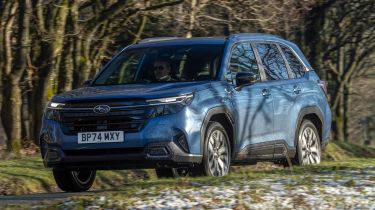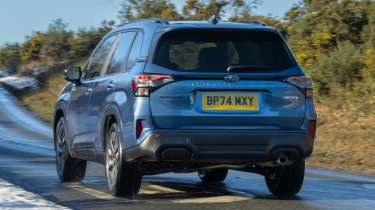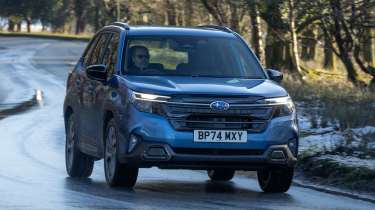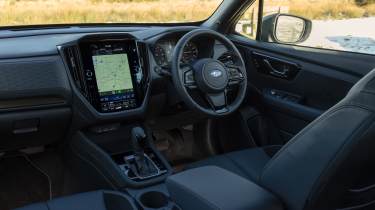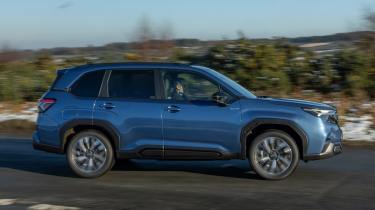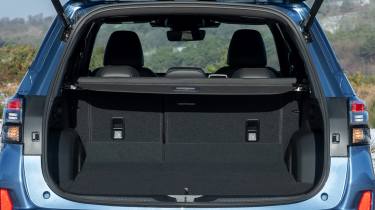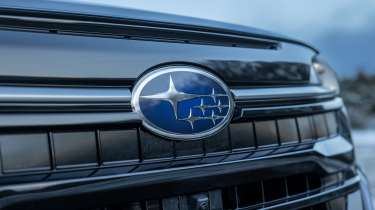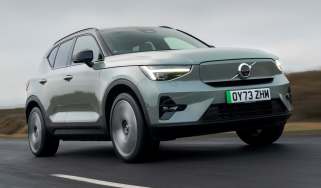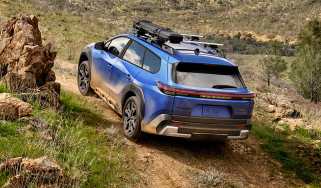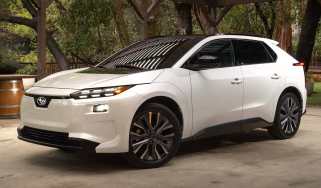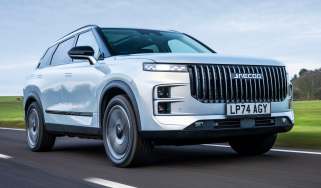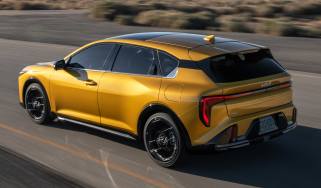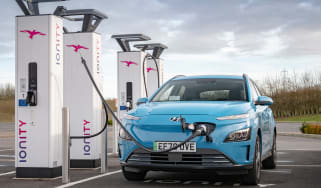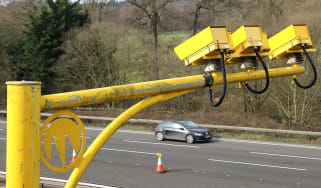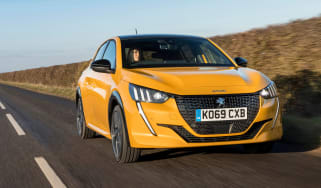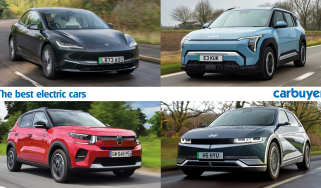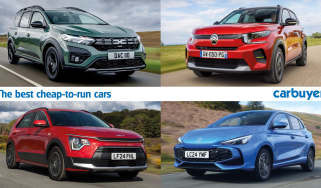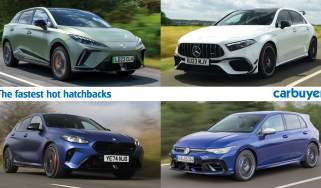Subaru Forester review – a dependable hybrid SUV
“The Subaru Forester may often be forgotten by buyers, but four-wheel drive and a hybrid system make it a dependable choice for countryside-dwellers”
Pros
- Durable interior
- Grippy all wheel-drive system
- Well equipped
Cons
- Not as efficient as some rivals
- Lacklustre performance
- Safety systems can be intrusive
Verdict – is the Subaru Forester a good car?
The Subaru Forester often slips the minds of buyers after a mid-size SUV, but it played a big part in pioneering the class in the 1990s. Now it’s slightly more niche than mainstream models, but appeals thanks to its grippy all-wheel drive configuration which makes it a good choice in the countryside or in colder, icier climes, and its hybrid system makes it economical at lower speeds.
Subaru Forester models, specs and alternatives
While it might not necessarily be a household name in the UK, the Subaru Forester was one of the pioneering compact SUVs in the 1990s, blending the underpinnings of Subaru's conventional hatchbacks with a high ride height and rugged looks, along with a car-like drive. Ingredients that makes the SUV class so popular today.
The latest Subaru Forester is now in its sixth generation, and the Japanese brand will be hoping to get more of a foothold in the SUV market; it’s a crowded one, though, with almost every manufacturer now in on the action. The Forester starts from just under £39,000, meaning it goes up against cars like the Toyota RAV4 and Honda CR-V, as well as the Volkswagen Tiguan, Kia Sportage or Hyundai Tucson.
 Top 10 best 4x4s and off-roaders 2025
Top 10 best 4x4s and off-roaders 2025
The Subaru Forester’s design remains rather upright and boxy this time around, rather than following the trend of disguising its SUV size with skewed proportions. The front end features a large grille that links with the headlights either side of it as one big fascia piece. At the rear, the Forester’s tail-lights are trapezoidal in shape and are linked by a centre bar of trim. It’s not a bad looking car by any means, nor does it stand out from the crowd.
| Trim levels | Power options |
|
|
MPG, running costs & CO2 emissions
The Subaru Forester has traditionally used a petrol boxer engine that’s not known for being particularly good on fuel. The last Forester introduced an ‘e-boxer’ hybrid engine, which pairs this with an electric motor for improved fuel economy. Still, the on-paper figures are in the mid-30s, which aren’t particularly impressive for the class in the modern day. Unlike many other petrol or diesel cars, the Forester is actually more efficient during lower-speed driving rather than on the motorway, so you can expect figures to climb closer to 40mpg when driving around town.
More reviews
Another reason for the less impressive on-paper fuel economy figures is the fact that the Forester is all-wheel drive at all times, whereas various rivals switch from two and four-wheel drive depending on how slippery the roads are. The upside is that the Subaru Forester offers more grip at all times and it’s one of the reasons that it’s a popular model in colder countries, where the roads are more slippery more of the time.
The Subaru Forester is a popular car among farmers, and the brand knows this. Subaru offers members of the National Farmers Union (NFU) a £1,000 discount on its SUVs, so that's something worth bearing in mind.
| Model | Fuel economy | CO2 emissions |
| Subaru Forester e-Boxer | 34.8mpg | 183g/km |
How efficient is the Subaru Forester in the real world?
While some rivals’ on-paper fuel economy figures may look more impressive at first glance, we found the Forester’s much more realistic to achieve in the real world. We noticed the mpg figures drop at motorway speeds, while around-town driving saw the numbers climb, which was encouraging.
How much will the Subaru Forester cost in tax?
As a full hybrid, the Subaru Forester is currently eligible for the annual £10 discount to the standard VED (road tax) cost. This will change in April 2025, however, when you will have to pay the standard rate, which will be £195 per year.
What will the Subaru Forester cost to insure?
While we don’t yet have confirmed insurance groupings for the Subaru Forester, we know its predecessor sat in group 23 out of 50, which is lower than similar rivals from the class. The Toyota RAV4 starts from group 26, rising to group 28, and the Honda CR-V sits between 34 and 37.
Engines, drive & performance
The Subaru Forester was one of the original SUVs to impress with a car-like drive, rather than the wallowy and uninvolving characteristics of other cars of this type from the 1990s. It famously uses what’s called a ‘boxer engine’ which sits low and flat in the car giving it a low centre of gravity, making for a more composed drive on the road, but it’s arguably less well suited to off-roading. In the latest Forester this setup has been made into a hybrid to make for a more economical setup.
Around town we were impressed with how refined the Forester was – as it’s a hybrid, the engine cuts in and out as and when it’s needed, but the transition between it and the electric motor was almost seamless and remarkably quiet.
It was much less refined when we put our foot down, however. Getting up to speed it can sound rather strained, and that’s largely down to the CVT automatic transmission, which can hold revs quite high.
On B-roads the Subaru Forester was surprisingly rewarding to drive. It felt responsive and well glued to the road thanks to the all-wheel drive system, so drivers should find it reassuring in more adverse weather conditions. It may not be a car you’d set out for a blast in, but is capable when you need it to be. All the more impressive is the fact that it manages all this while still offering a soft and comfortable ride.
Hybrid models
The Forester is offered solely with a hybrid powertrain comprising a 2.0-litre four-cylinder boxer engine and electric motor – a setup Subaru has called the e-boxer. It doesn’t feel particularly quick, but it’s got about the right amount of power for most buyers, and with help from the electric motor it’s more than capable of keeping up with traffic and overtaking.
| Model | Power | 0-62mph | Top speed |
| Subaru Forester 2.0-litre e-Boxer | 136bhp | 12.2 seconds | 116mph |
Interior & comfort
Subaru has tended to verge on function over form when it comes to its cars’ interiors in the past. The latest Forester is no different, although we can at least say that most of the scratchy plastics have been swapped out for sturdier, more durable materials that feel made for a rugged car.
There are rubber-like plastic trim pieces around most of the car’s surfaces – while these might not feel particularly upmarket, they give a sense of dependable robustness, so the Forester feels built to last, rather than the disposable feeling the old model’s interior gave off.
From launch, the Subaru Forester is offered in three trims: Limited, Field and Touring.
Is the Subaru Forester’s infotainment and sat-nav system easy to use?
There have been big changes to Subaru’s infotainment system. Every Forester gets a portrait-orientated screen on the centre of the dash with most of the car’s main functions accessible through it. It’s not the most crisp system to look at, but we think it’s easy and intuitive to navigate.
The Forester comes with wireless smartphone mirroring, so you can use Apple CarPlay and Android Auto if you prefer to. We’re glad to see that the air-conditioning and heating controls are permanently onscreen, so they can be accessed at all times, rather than via tedious submenus. There’s still a physical volume knob and cabin temperature controls, too, so it’s easier to adjust these on the fly, making a change from many other modern car systems.
The steering wheel-mounted controls look a little daunting at first, but these are easy to get the hang of after a short time. These can be used to alter the information displayed in front of the driver between the physical dials.
Key features | |
|
Limited
|
Field (Limited plus…)
|
|
Touring (Field plus…)
| |
Boot space, practicality & dimensions
The Subaru Forester is an unashamed SUV, so it doesn’t try to hide its boxy proportions like many others in the market do. It’s practical as a result, with lots of room for the front and back-seat passengers. The windows are rather large, and Subaru has lowered the window-line compared to the old Forester by 14mm, which helps make the cabin feel airy.
In the rear, the floor is mostly flat, which is good from leg and foot room, and there’s plenty of headroom thanks to the high ceiling. In fact, space is even plentiful for anyone sitting in the middle of the rear row, which you can’t say about many rivals. Two ISOFIX points will come in useful for families with small children that need a child seat.
There aren’t quite as many storage spaces in the cabin area as you see in some other rivals, but there are two cup holders on the centre console, a small storage bin behind that, and there’s a wireless smartphone charging pad under the dashboard – it’s a shame this isn’t rubberised, though, to stop your phone moving around.
| Size comparison | |||
| Model | Length | Width | Height |
| Subaru Forester | 4,670mm | 1,830mm | 1,730mm |
| Toyota RAV4 | 4,620mm | 1,855mm | 1,690mm |
| Honda CR-V | 4,706mm | 1,866mm | 1,684mm |
| Volkswagen Tiguan | 4,539mm | 1,859mm | 1,658mm |
Does the Subaru Forester have a big boot?
At 508 litres, the Subaru Forester’s boot will come in very useful for buyers that need to regularly transport larger items even with all the seats in place. Subaru hasn’t given a total capacity with the seats folded down, however. However, if practicality is top of your list, some rivals offer more space – the Toyota RAV4 boasts 580 litres of boot space, and even as a plug-in hybrid you get 520 litres to play with.
| Boot space comparison | |
| Model | Boot space |
| Subaru Forester | 506 litres |
| Toyota RAV4 | 580 litres |
| Honda CR-V | 587 litres |
| Volkswagen Tiguan | 520 litres |
Reliability & safety
It’s safe to assume that Subaru owners are a very happy bunch, because the brand came top in our Driver Power customer satisfaction survey. Buyers love the brand for so many reasons, because it topped five of the survey categories and even came within the top five for all but two of them. The only real negatives were for running costs, fuel economy and lacklustre acceleration in the eyes of owners, but aside from that the brand did exceptionally well.
Surprisingly, however, the brand performs worse than average for reliability, with 27.9% of owners reporting an issue with their car within the first year, though that doesn’t seem to put the buyers off.
How safe is the Subaru Forester?
Impressively, Subaru has not received a crash-test rating of less than five stars since 2009. The Forester was tested in December 2024 by Euro NCAP and received the full five stars with its best performance in the child occupant protection category, followed by vulnerable road user protection and then adult occupant protection. The Forester comes with lots of safety kit, although we found the driver-attention monitor a little too sensitive, and found it would bong all too often at us. Euro NCAP gave the Forester's safety equipment a rating of 72% in testing.
Should you buy a Subaru Forester?
The Subaru Forester kickstarted the modern compact SUV class back in the 1990s, and while the game has moved on a lot since then, the Forester has, too. Now, though, it’s not as big of a household name, but it resonates with those who live in the countryside or in colder climates because of its dependable and grippy all-wheel drive setup that adds some reassurance on less well-trodden roads.
It’s not a car you’d choose for the sole purpose of taking it out on a weekend blast, but the Subaru drives really well and has reassuring handling and that doesn’t come at the cost of comfort. It rides well which makes it comfortable, although push it too hard and the engine noise can upset the serenity of the cabin somewhat.
The Subaru Forester isn’t the most plush or luxurious car inside, but build and material quality has massively improved compared to the model that came before it and everything’s where it should be. If you’re not a big fan of tech-heavy SUVs, then the inclusion of some physical controls and the easy-to-use infotainment screen should add to the appeal. It’s well equipped, though, so buyers should be well catered-for.
What is the Carbuyer pick of the Subaru Forester range?
With plenty of kit as standard, we’d recommend sticking with the entry-level Forester Limited. Standard-fit heated front seats and a 360-degree parking camera are welcome inclusions usually reserved for higher-spec models, so it’s good to see them for the price.
Subaru Forester alternatives
The Subaru Forester goes up against most mainstream mid-size SUVs, but is arguably a little more rugged with its four-wheel drive system that has traditionally made it a popular option among those living in the countryside or in colder climates. Cars like the Toyota RAV4 and Honda HR-V also offer this as an option, but only if you go for the more expensive plug-in hybrid versions of those cars.
How we tested the Subaru Forester
We tested the Subaru Forester in the UK in cold, icy weather in February 2025.
